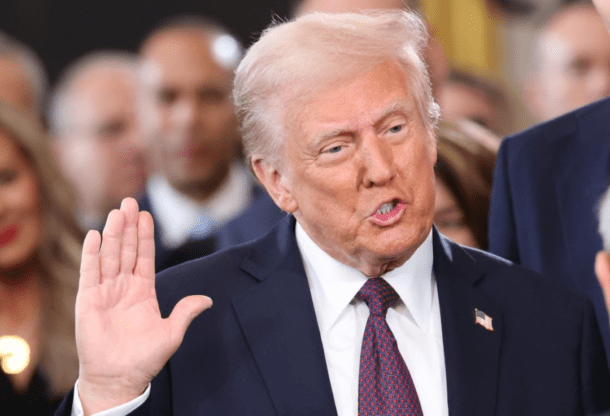Hours into his second term as U.S. President, Donald Trump announced plans to impose a 25% tariff on products from Canada and Mexico, potentially starting February 1.


Speaking from the White House while signing a series of executive orders, Donald Trump stated, “We’re thinking in terms of 25 per cent on Mexico and Canada, because they’re allowing a vast number of people to come in.”
The move follows Trump’s campaign promises to prioritize American workers and protect the nation’s borders, although it contradicts earlier reports by the Wall Street Journal, which suggested that the president intended to focus on trade assessments rather than immediate tariff impositions.
Trade Relations and Policy Shifts
The announcement has reignited fears of a trade conflict, with concerns extending beyond North America to the European Union, which remains wary of potential tariffs under Donald Trump’s administration.


Background on Tariffs
Trump’s first term from 2017 to 2021 saw a wave of tariffs targeting various imports, aiming to reduce trade deficits and encourage domestic production. Tariffs, essentially surcharges on imported goods, are paid as items cross borders and often result in increased costs for consumers.
Mixed Reactions
While Trump’s supporters view the measure as a decisive step toward safeguarding American interests, critics warn of potential economic repercussions, including strained relations with key trading partners and higher costs for U.S. businesses and consumers.
As February approaches, all eyes will be on the White House and international markets, awaiting further details and potential implications of the proposed tariffs.






